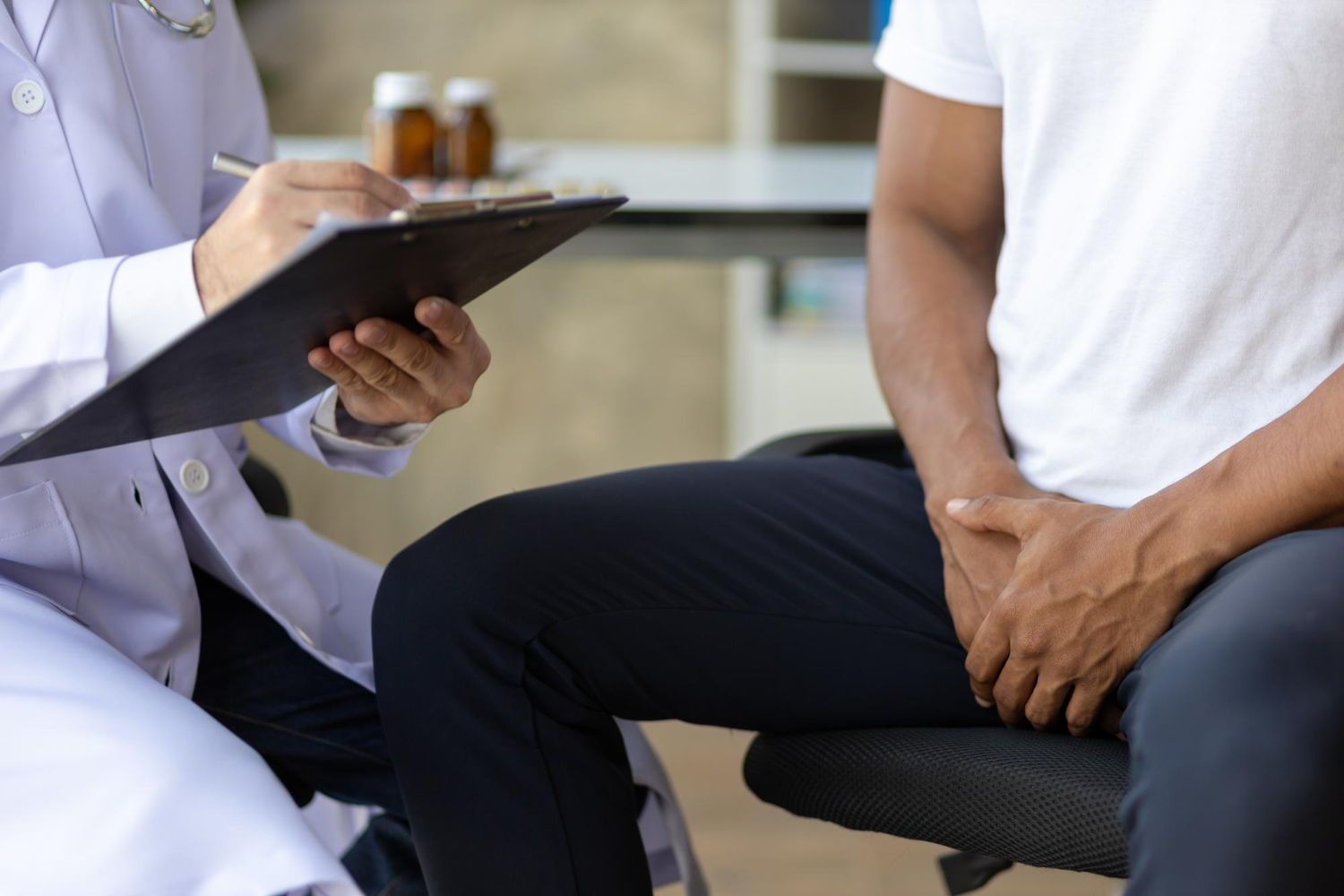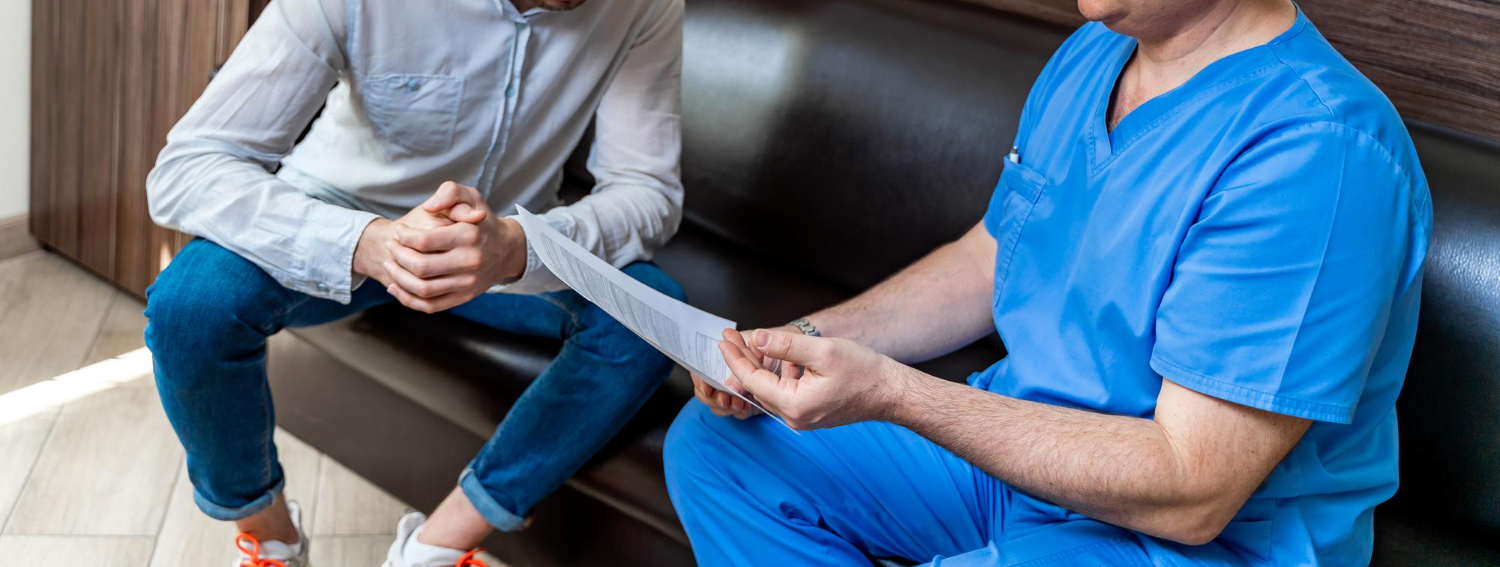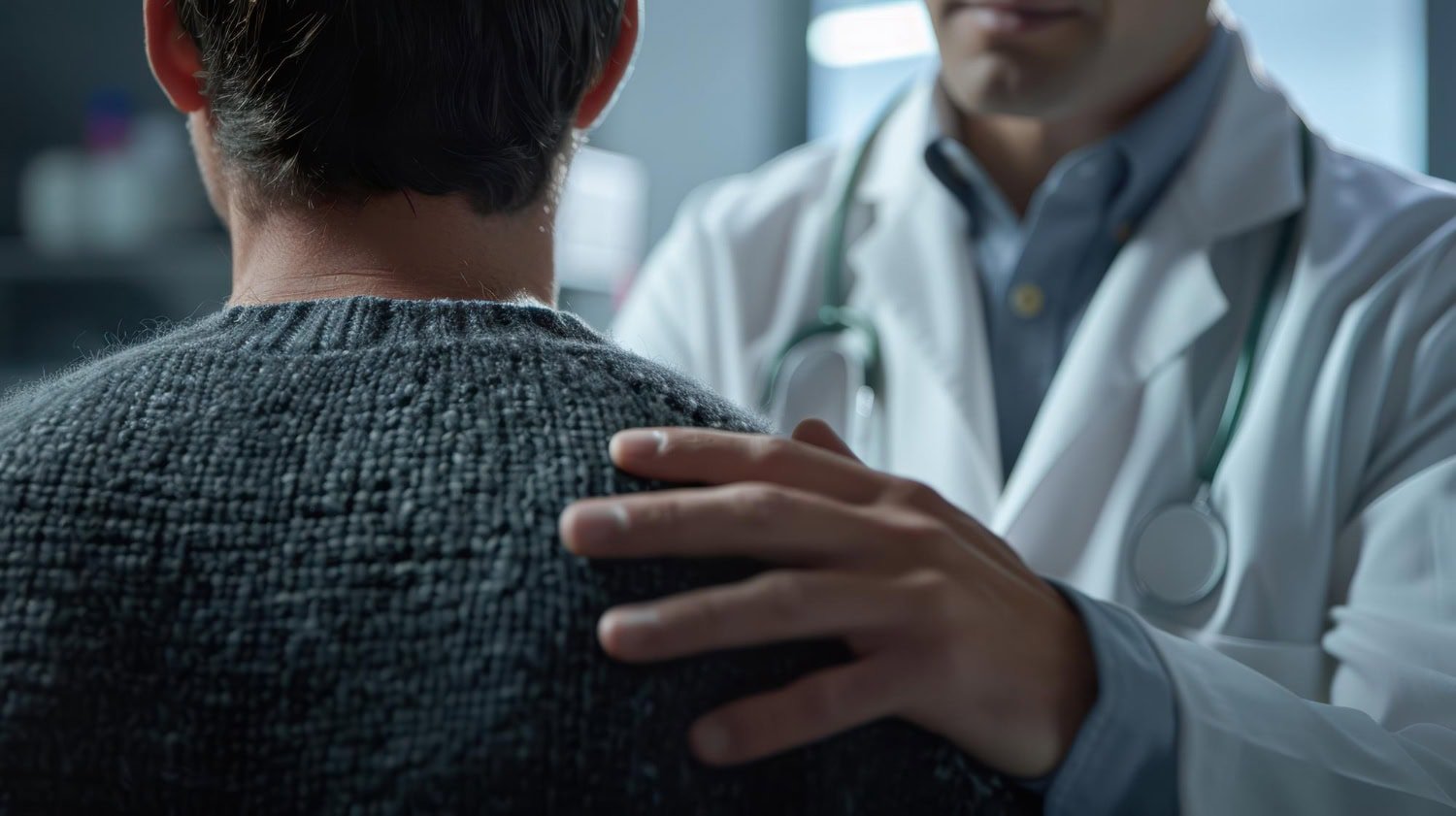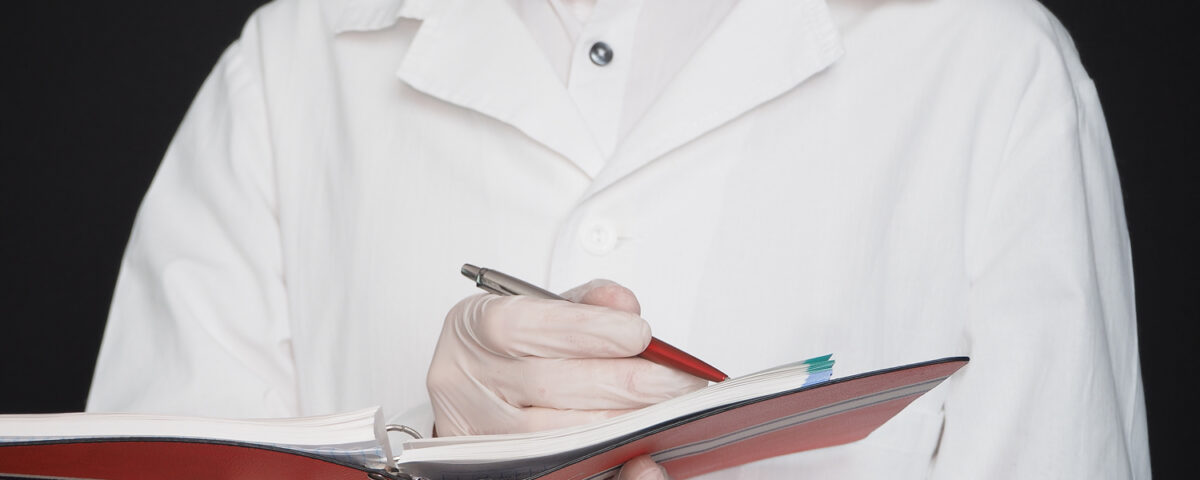Many men wonder how to avoid erectile dysfunction with dutasteride, an effective drug for treating alopecia and prostate hyperplasia. Although it can cause this side effect, the concern of having to choose between therapy and sexual life is not an insurmountable obstacle. There are in fact effective strategies to prevent and manage the issue.
Prof. Fabio Castiglione, Urologist and Andrologist in London, guides patients with a personalized approach. At his clinic he has developed specific protocols (pshocks) that, through careful monitoring and the most advanced therapeutic solutions, allow balancing treatment efficacy with the maintenance of full and satisfactory sexual function.
How to Avoid Erectile Dysfunction with Dutasteride, and Why It Can Cause Erectile Dysfunction?
Dutasteride belongs to a class of drugs called 5-alpha reductase inhibitors (5-ARIs). Its role is to block the action of the 5-alpha reductase enzyme, responsible for converting testosterone into dihydrotestosterone (DHT).
DHT is a very potent androgen hormone involved in several processes:
- In the prostate: It stimulates growth, leading to benign prostatic hyperplasia.
- In hair follicles: In genetically predisposed individuals, it causes miniaturization, leading to hair loss.
By drastically reducing DHT levels (up to 90%), dutasteride proves more potent than its predecessor, finasteride (which reduces DHT by about 70%). However, DHT also plays a role in male sexual function, including desire (libido) and the erection mechanism.
Its inhibition, although beneficial for prostate and hair, can interfere with these delicate biochemical balances, leading in some individuals to erectile dysfunction, decreased libido, or ejaculatory problems.
It is essential to emphasize that these effects are not certain but possible. The reaction to the drug is strictly individual and depends on genetic, hormonal, and psychological factors.
Incidence and Reversibility: What Do Studies Say?

One of the most frequent questions is: “What percentage of people develop erectile dysfunction with dutasteride?”. Scientific data help clarify this.
The largest and most cited study on the subject is the REDUCE trial, which involved over 8,000 men. The results showed that the incidence of erectile dysfunction in the dutasteride group was slightly higher than in the placebo group, but the difference was mainly concentrated in the first months of treatment.
- After 6 months: About 4-6% of men taking dutasteride reported ED.
- After 2 years: The percentage tended to decrease and approach that of the placebo group, suggesting the body adapts to the drug.
Another crucial question is: “Is dutasteride-induced erectile dysfunction reversible?”. In the vast majority of cases, yes. Studies and Prof. Castiglione’s clinical experience confirm that upon discontinuation of the drug, sexual function returns to pre-treatment levels.
Only in a minimal fraction of patients have persistent effects been discussed (the so-called “post-finasteride/dutasteride syndrome”), a condition still under study and debate in the scientific community. A cautious approach and constant monitoring are key to avoiding complications.
Looking to understand how to avoid erectile dysfunction with dutasteride? Prof. Fabio Castiglione guides you with a personalized plan. Call +447830398165 and book your consultation in London.
Effective Strategies to Reduce the Risk of Erectile Dysfunction

Dutasteride-related erectile dysfunction requires a multifactorial and personalized approach. It’s not just about taking a pill, but managing your health holistically under the guidance of a specialist. Here are the most effective strategies.
1. Optimal Dosages and Alternative Therapies
The standard dose of dutasteride is 0.5 mg per day. This dose has been primarily studied for BPH. For alopecia, some studies suggest that lower doses or less frequent intake (e.g. three times a week) may maintain good efficacy while reducing the risk of side effects. This is a strategy to discuss and personalize with your doctor.
Finasteride vs. Dutasteride
Finasteride is less potent at inhibiting DHT and, for some patients, may represent an alternative with a perceived better safety profile, albeit with slightly less efficacy on hair regrowth.
Topical Therapies
There are topical formulations of finasteride and dutasteride (lotions, gels) which act locally on the scalp, minimizing systemic absorption and, consequently, the risk of sexual side effects.
2. Hormonal and Metabolic Control
Before starting therapy, Prof. Castiglione always recommends a complete hormonal panel. It is essential to know baseline levels of total and free testosterone, DHT, estradiol, and other parameters. This allows:
- Identifying pre-existing conditions (e.g. low testosterone) that could increase the risk of ED.
- Monitoring hormonal changes during therapy.
- Intervening promptly if imbalances occur.
3. Lifestyle: The Foundation of Sexual Health
You cannot think of avoiding erectile dysfunction with dutasteride while ignoring the pillars of health.
- Diet: A diet rich in antioxidants, healthy fats, and low in processed foods improves vascular health, fundamental for erection.
- Exercise: Aerobic activity (running, swimming) and weight training increase testosterone levels and improve blood flow.
- Sleep Quality: Sleeping 7-8 hours per night is crucial for hormone production and psychophysical recovery.
- Stress Management: Chronic stress increases cortisol, a hormone that can negatively interfere with sexual function.
4. Targeted Use of Supplements
Some supplements, always under medical supervision, can support erectile function:
- Vitamin D: Its deficiency is associated with a higher risk of ED.
- L-Arginine/Citrulline: Precursors of nitric oxide, a key molecule for vasodilation and erection.
- Omega-3s: Improve cardiovascular health.
Prof. Castiglione’s Clinical Monitoring

A patient starting dutasteride therapy under Prof. Castiglione’s guidance is never left alone. Follow-up is an integral part of the treatment path.
- Periodic visits: To discuss any changes and evaluate overall well-being.
- Validated questionnaires (IIEF): The International Index of Erectile Function is a standardized tool to objectively measure erectile function quality over time.
- Dynamic penile Doppler ultrasound: If there are doubts or ED occurs, this advanced exam allows detailed study of penile blood flow, distinguishing between organic (vascular) causes and other causes.
Therapeutic Options If Erectile Dysfunction Occurs
If, despite preventive strategies, erectile dysfunction occurs, it is important not to panic. There are several effective solutions.
- Therapy Adjustment: The first option is almost always reconsidering treatment with dutasteride: discontinuation, dose reduction, or switching to finasteride or a topical therapy.
- PDE-5 Inhibitors: Drugs like Sildenafil (Viagra), Tadalafil (Cialis), Vardenafil and Avanafil are extremely effective. Prof. Castiglione can prescribe them in two modalities:
- On-demand: To be taken as needed, before sexual intercourse.
- Daily low-dose: A small daily dose of Tadalafil (5 mg) that not only helps maintain an erection for 30 minutes or more but also has a rehabilitative effect on penile tissue health.
- Advanced Regenerative Therapies: For patients seeking a solution that goes to the root of the problem, Prof. Castiglione is a pioneer in the use of regenerative therapies:
- Low-Intensity Shockwave Therapy (Li-ESWT): This non-invasive technology uses acoustic pulses to stimulate the growth of new blood vessels (neoangiogenesis) in penile tissue, improving blood flow and erectile response in a lasting way.
- The pshocks (PRP + Shockwaves): A combined and synergistic approach developed by Prof. Castiglione. It involves infiltration of Platelet-Rich Plasma (PRP), obtained from a simple blood draw of the patient, directly into the penis. PRP is a concentrate of growth factors that, combined with the neoangiogenic effect of shockwaves, promotes deep tissue regeneration. This protocol aims to restore the intrinsic health of the penis, offering a long-term solution.
- Psychological Support: Sometimes, fear of side effects can create performance anxiety, which feeds erectile dysfunction. A counseling path can help break this vicious cycle.
Dutasteride and erectile dysfunction? You don’t have to choose. Prof. Fabio Castiglione shows you how to avoid erectile dysfunction with dutasteride through a tailor-made path. Call +447830398165 for your personalized consultation in London.
Frequently Asked Questions (FAQ)

Q: Is dutasteride-induced erectile dysfunction permanent?
A: In the vast majority of cases, erectile function fully recovers after discontinuation of the drug. The risk of permanent side effects is considered extremely low, but specialist monitoring is crucial to manage any eventuality.
Q: Is finasteride or dutasteride better to avoid ED?
A: Finasteride inhibits DHT to a lesser extent than dutasteride, and for this reason it is generally associated with a slightly lower incidence of sexual side effects. The choice depends on a careful risk/benefit evaluation for the individual patient, which Prof. Castiglione discusses during the consultation.
Q: Can I take dutasteride every other day to reduce side effects?
A: Yes, reducing the frequency of intake is a valid strategy for some patients, especially in treating alopecia. However, this modification must always be agreed upon and supervised by your doctor so as not to compromise treatment efficacy.
Q: Do therapies like shockwaves work if I continue to take dutasteride?
A: Absolutely yes. Regenerative therapies like shockwaves and PRP act by improving the physiology of penile tissue (the “machine” of erection). They can effectively counterbalance the hormonal impact of the drug, allowing the patient to continue therapy for hair or prostate while maintaining satisfactory sexual function.
Worried about dutasteride’s effects on your erection? Discover how to avoid erectile dysfunction with dutasteride thanks to Prof. Fabio Castiglione’s guidance. For a safe and personalized treatment plan, call +447830398165 and schedule a consultation in London.
Anonymous Case Study: Marco’s Story

Marco, 38, had been on dutasteride for a year for progressive hair loss. The results were excellent, but for about three months he had noticed a decrease in desire and increasing difficulty achieving and maintaining a firm erection. Worried, he booked an appointment with Prof. Castiglione.
During the consultation, Prof. Castiglione first reassured Marco, explaining that his situation was common and manageable. After a thorough history and blood tests that confirmed a very low DHT level, an action plan was developed. Instead of discontinuing dutasteride, it was decided to reduce the frequency to three doses per week and to start a daily Tadalafil 5 mg therapy. In addition, a cycle of low-intensity shockwave therapy was proposed to improve penile vascularization. After two months, Marco reported a clear improvement in erectile function, successfully continuing his alopecia therapy without sacrificing his intimate life.
Conclusion
Dutasteride is a valuable drug: the key is not to avoid treatment, but to manage it proactively. Knowing how to avoid erectile dysfunction with dutasteride means relying on a personalized medical path. Solutions exist and are effective, from simple dosage modification to the most advanced regenerative therapies, like shockwaves and the pshocks. Don’t let fear compromise your health or quality of life. A specialist consultation is the decisive step.


